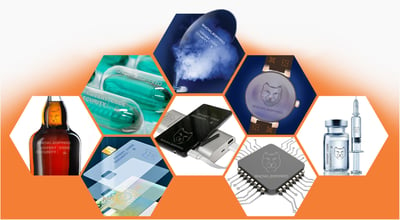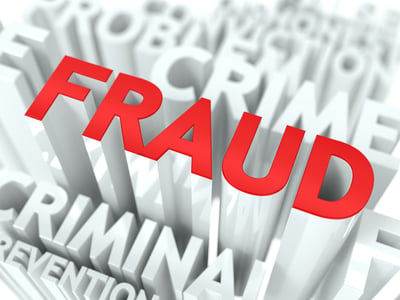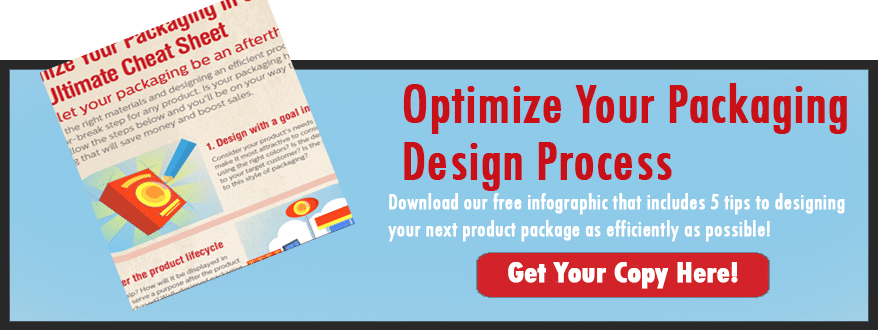Anti-Forgery Technology For Packaging Materials
If there is one thing that almost all businesses care about, it's ensuring that their genuine products get to their customers and that any forgeries or fakes never see the light of day.
But, many of the criminal-minded who specialize in forgeries of legitimate products are often honing their craft and producing various workarounds to anti-forgery tools.
However, in this game of cat-and-mouse, breakthroughs in anti-forgery technology often stay ahead of those who would try to dupe your customers.
There has been some very impressive evolution in anti-forgery capabilities for packaging materials but, perhaps none as exciting as the SNOWLEOPARD line of anti-forgery technologies.
Boasting the ability to embed information at the sub-micron level, these technological innovations will help you ensure the highest anti-forgery standards are part of the very fabric of the packaging materials you utilize.
But, what exactly is this technology? How does it work? And more importantly, how can you implement it for your own anti-counterfeiting needs?
This article will introduce you to the mind-blowing capabilities of modern anti-forgery technologies for specific packaging materials.
After reading this article, you will be able to decide if these technological advancements in anti-counterfeiting are suitable for your business, brand, and products.

What Are Anti-Forgery Packaging Technologies For Packaging Materials?
Anti-forgery packaging technologies such as those under the SNOWLEOPARD brand are highly specialized mechanisms designed for the specific purpose of preventing the counterfeiting of your product and the product's packaging.

Why Are These Technologies Necessary?
Various companies have developed Anti-forgery and anti-counterfeiting technologies in response to the global problem of counterfeit products and product packaging. And this is for a good reason.
As reported by INC. magazine, counterfeit products cost US businesses $600 billion dollars per year! And we are not only talking about designer goods.
For example, the office imaging industry (think copiers, printers, fax machines, etc.) loses about $3.5 billion dollars per year to counterfeit toner and inkjet cartridge manufacturers.
The forged printer cartridges and their packaging often look identical to OEM cartridges. Sans intervention by significant authority figures such as the FBI, many of these counterfeit products make it to market and into the hands of consumers in countries all over the world.
This is why anti-forgery technologies such as SNOWLEOPARD are so inspiring. But, what exactly are these technologies, and how do they work?

How Anti-Forgery Technologies For Packaging Materials Work
While there are several anti-counterfeit technologies for packaging materials currently available on the market, the SNOWLEOPARD anti-forgery approach takes things to a new level of security.
Below, we will explain how this technology works and what materials it can be applied to.
SNOWLEOPARD is a cutting-edge L2S Optical Security Authentication technology that boasts the ability to etch micro-structure security codes at the sub-micron level on/in certain packaging materials, including plastic, flexible-films, glass containers, metal cans, and more.
Both fixable and variable alphanumeric text, graphics, and related branding elements can be etched into the packaging material.
The materials may be clear or opaque. They can also be of any color, light or dark. The security codes may also be applied directly onto the product itself or placed upon tamper-evident labeling as an additional layer of protective packaging.
Authentication via invisible security codes appears momentarily when a liquid-vapor mist is applied. The code will then quickly disappear seconds after evaporation.
Ultra-fast vanishing of the code allows for rapid authentication and makes it virtually impossible to replicate. Product authentication occurs immediately in the field. Instruments, additional tools, or special lighting are not required.
SNOWLEOPARD anti-forgery technologies are proven to prevent counterfeiting and forgery in addition to protecting your brand’s integrity.
It should be noted that while there are other brands besides SNOWLEOPARD, we here at Industrial Packaging recommended the use of this brand's anti-forgery technologies based upon the quality of the product.

How Can Anti-Forgery Technologies Improve Your Products And Packaging?
After reading this article, you probably think, wow, this is all amazing, but how can it benefit MY business?
Would you like to learn how implementing these technologies in tandem with your packaging materials can increase the safety of your products?
Do you want to know how much these technologies will decrease the likelihood of bad actors counterfeiting your products and putting your company, brand, and customers at risk?
Suppose you would like to learn more about how these anti-forgery and counterfeiting technologies can improve your products and packaging. In that case, you will want to consider speaking with one of our packaging specialists.
They will be able to help you figure out how these remarkable technologies can benefit your company, products, brands, and customers!
About Nathan Dube
As the Digital Marketing Specialist at Industrial Packaging, I am honored to create content for such a phenomenal company and work with one of the greatest teams in the Packaging Industry. Whether creating a video, writing blog posts or generating other pieces of content and multimedia, I am always excited to help educate and inspire our prospects and clients to reach their highest potential in regards to their packaging processes and needs.



